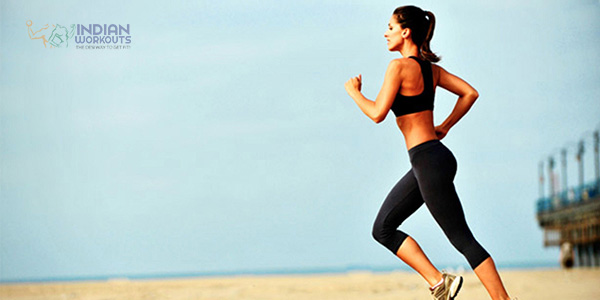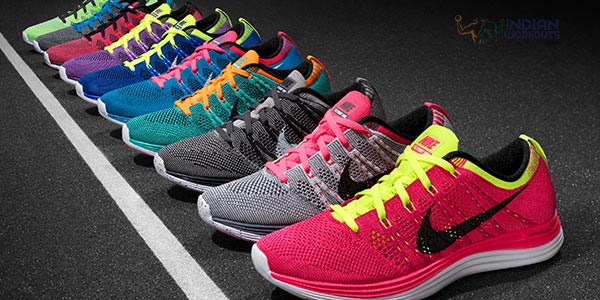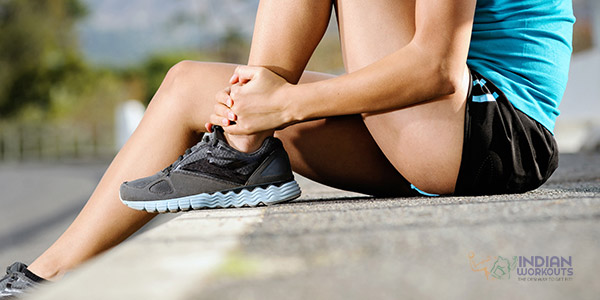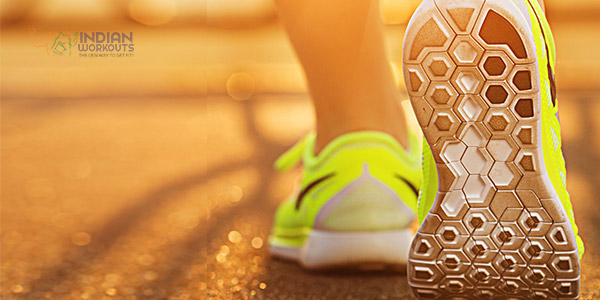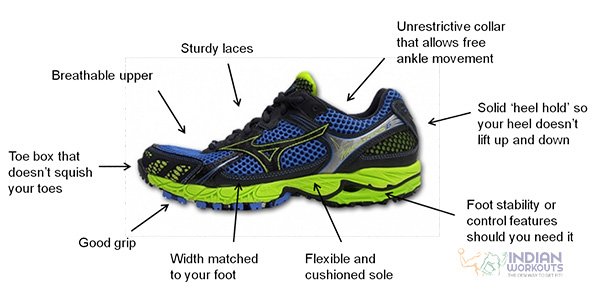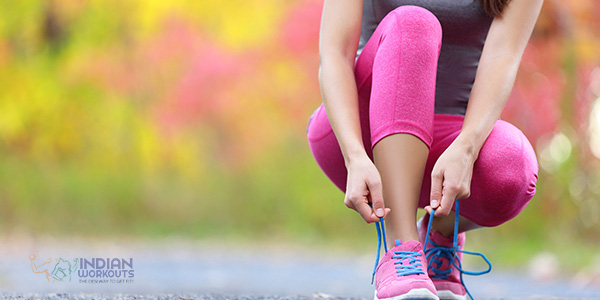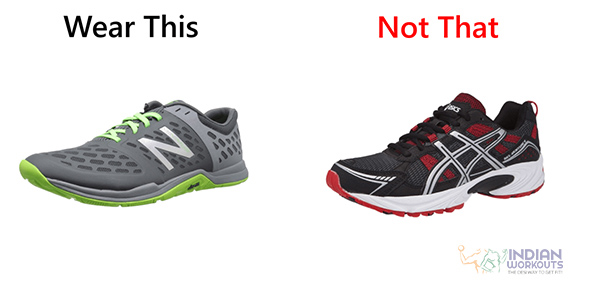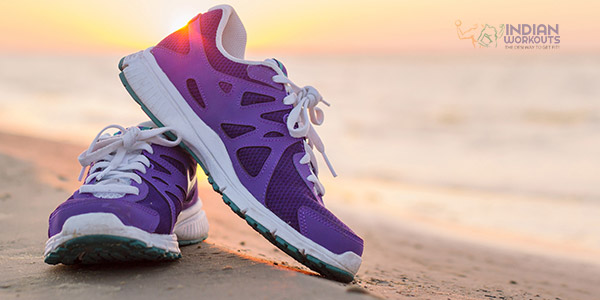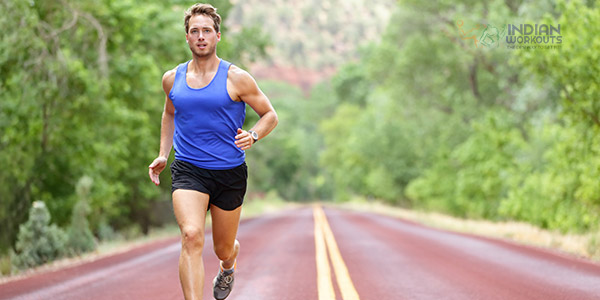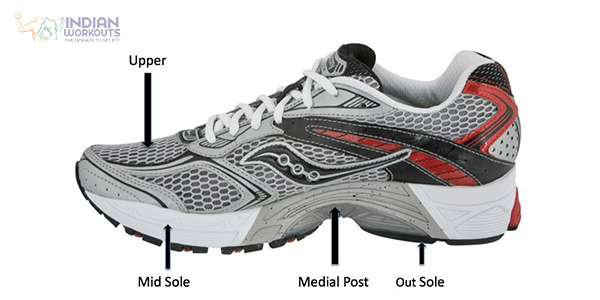Whether you’re a professional marathon runner or an occasional pavement pounder, sinking into an ideal pair of running shoes can be a lifting experience. Running is a total body workout in which every muscle and bone flex in coordination with one another, to burn maximum calories for weight loss. But to get that extra out of your running, you definitely need a pair of ideal running shoes.To make sure your bones and muscles create a spring action on your entire body without getting any sprains or cramps, your feet need a pair of
To make sure your bones and muscles create a spring action on your entire body without getting any sprains or cramps, your feet need a pair of comfortable shoes. Today, you have access to some of the best international brands of shoes available for running, which ensure the most premium quality manufacturing, with extra support, elastic action, and sprinting qualities. However, the choice of ideal running shoes always depends on the build and the weight of the wearer.

The best professional running shoes for athletics like marathons, jumping, sprinting and jogging, have slightly different needs than the best running shoes for exercises, like running on the treadmill or on the road or pavement. So, here’s a quick on how to choose the most comfortable running shoes.
For runners, selection of the best running shoes is akin to buying a swanky car. We shortlist our best pick, according to a checklist of criteria– design, comfort, durability, surface and speed control. We tick off each of the reigning features one by one depending on our priorities.The type of shoes for running also depends on the kind of terrain you set your feet on. The make of your shoes for running on a trail will have different features, than those for running on the road. Also, each one of us has a unique shape and
The type of shoes for running also depends on the kind of terrain you set your feet on. The make of your shoes for running on a trail will have different features, than those for running on the road. Also, each one of us has a unique shape and foot size, which needs to be the best fit, for the most comfortable running shoes.
Best Running Shoes for Every Foot Type
The three main foot types are flat, neutral and high arch. Flat feet tend to have fallen arches, making them flexible and prone to over pronation, an inward rolling motion. Neutral feet are the most biomechanically sound variety, putting them somewhere in the middle. High-arched feet are essentially the polar opposite of flat feet. Runners are often struggling with feet problems like Plantar Fasciitis, Achilles Heel and Shin splits, which hinder their pace. So, this should be adequately treated by doctors before they start running.
To cater to the needs of the variety of foot shapes, top brands have developed models to accommodate runners of all strides. In the selection process, be sure to align your foot type with the proper shoe category. Flat-footed harriers tend to gravitate to a higher stability shoe, as they help prevent overpronation. Neutral runners can often run in many types of footwear, but most commonly go for a moderate stability shoe. Runners with high arches are best suited for a cushioned shoe, providing midsole padding with flexibility.
Once you can select the correct category of shoes, you can try on your best size. Most runners need to go up a half size from their street shoes, allowing half-inch wiggle room in the toe box. When you squeeze into an ideal pair of shoes, your feet should feel snug and secure without any chance of slipping.
Here are some snappy tips from a buyer’s guide for the best running shoes:
1) Consider the surface you will be running on
- The kind of ground that you’re hitting obviously affects the pair of kicks you choose for running. For instance, if you are running on a track or court specially designed to be flat and offer grip, you won’t need extra traction on your shoe.
- Road/track running will require less traction and lighter weight.
- Trail running shoes should have good traction, support, and cushion for uneven terrain.
2) Identify the kind of running you will do
It’s important that you purchase the kind of athletic shoes for running. There are many different categories of athletic shoes, like training shoes, sprinting shoes or walking shoes, which are not meant for indoor, track, cross country, sprint, or distance running.
3) Take your weight into account
The heavier you are, the greater the impact of your foot on the ground. This increase in impact may require you to purchase shoes with additional support. You can even consult a podiatrist (foot expert), to help decide on your shoes, especially if you already feel foot, leg, or back pain. Heavy weight may need a pair of shoes that offer a greater bounce off the gravity, unlike light weights who may need something sleek and minimalistic.
4) Consult a doctor about injuries and physical impairments
You may have an injury that influences your gait or a physical impairment that does the same. In both these instances, you should check with your doctor as to what kind of shoes would offer the best support and running experience for you.
Once you finish your foot biometric analysis, you might go shoe shopping to your best shoe brand store. Keep a tab on the latest market trends for shoes, and catch up with the latest styles and colors online or in local stores. Check out a few buying tips, before you zoom into your favourite shoe store-
5) Go to a special branded shoe store for your fit
Avoid being in a dilemma while buying the best running shoes. Don’t dodge between too many brands as each one has a different make and pricing. While international brands can be expensive, select a popular local store where you can select a running shoe, keeping style, pricing, comfort, and material into account. Although buying shoes online can be affordable, there is no real substitute for trying on shoes in person.
6) Try on your shoe later in the afternoon
During the course of the day, your feet become swollen from physical activity. By trying on your shoe later in the day, you will prevent buying a shoe that is too small. You should also consider trying on shoes after a run. This will simulate the max size of your foot.
7) Aim for shoes that are snug
If you feel pinching or uncomfortable rubbing, that shoe is likely not your best fit. Over the course of your run, your feet will swell in size. Also, over the course of your running, the uncomfortable features will likely become worse with each mile, causing you unnecessary discomfort.
- Before buying, take a short run around the store to test fit, and understand your comfort level, before you make your final purchase. Make sure the shoes you choose feel great when you are running, not just standing.
8) Ask questions about the features of your shoe
A chic pair of running shoes may not be easy in your pocket, so don’t buy shoes with features you don’t require. Ask the shopkeeper about generic features like:
- Vents in the shoe.
- The shape or configuration of the bottom of the shoe.
- Transparent parts that show an “air bladder” for support.
9) Break in your shoes to prevent blisters and increase comfort
While your shoes adjust to your feet and your feet adjust to your new shoes, there will probably be some very slight friction which can cause blisters. Begin breaking in your new shoes by going on shorter runs or walks. This way you run less of a risk of developing blisters.
Some recent studies have suggested that, especially for athletic and running shoes, you should be able to put your new footwear on immediately and be comfortable.
10) Check the flex point of the shoes
The flex point of the shoe is the point at which it bends while running. For optimal comfort, the flex point of the shoe should match the bending point of your foot.
- You can check the flex point of the shoe by holding it by the heel and pressing the toe of the shoe onto the ground. The point where the shoe bends and creases (if it bends at all) is the flex point.
- This step is important because if the flex point of the shoe doesn’t align with your foot, it can cause problems like arch pain or plantar fasciitis (heel pain).
11) Avoid gimmicks
You should also avoid buying into the notion that a shoe with “special features” will help you to run longer, faster or better.
- A lot of shoes will advertise features like shock-absorbing cushioning or claim to help you lose weight or even cure an injury. However, experts say that there is no significant difference between these shoes and the most basic, no-frills running shoes.
- Even those minimalist shoes designed to mimic barefoot running which have become so popular in recent years have not been scientifically proven to reduce a runner’s risk of injury.
12) Be prepared to spend a little money
-
- You don’t have to stick to a shoestring budget while buying a cool pair of running shoes.
- Running shoes are an investment, the right pair will help you run smoothly, avoiding any injuries. Buying a good pair of running shoes now save you money on doctor’s bills or banking on your physiotherapist regularly.
- Don’t be tempted to buy a cheap pair of running shoes just because you found them in the bargain basement. Similarly, you don’t have to throw your money on a flashy pair of shoes, just because they come under a patronizing brand.
13) Pointer on how to hit the ground while Running
An upright alignment of posture, with a slight forward tilt, close arm swing, and short strides help us run faster. But the most important part of running is the foot strike. The closer your foot strike, the faster your running. You don’t need to over stride while running. While a lot of runners tend to land on their mid foot while running, some even tend to land on their heels, which is perfectly okay. All you need to maintain is the speed and the alignment between the arms swinging.
Undoubtedly, a pair of cool running shoes is enough to spruce up your physique. And if you wish to go deeper into your shoe dynamics, then here’s a buzz word for every part of the running shoe you can consider:
-
-
-
-
- Upper: It is the mesh fabric that covers the top and sides of the shoe and helps clinch down the foot into the shoe.
-
- Heel Counter: The firm padding around the heel either placed externally or in the interior of the shoe.
-
- Heel Crash Pad: It’s the segmented cushion underneath the heels to absorb strike-impact on landing.
-
- Heel Toe-Offset: It is the difference between the rear of the foot and the ground, also known as “heel-toe drop”.
-
- Mid-sole: It is the middle of the shoe, which is packed with foam, gel or plastic to offer flexibility and support to the feet.
-
-
-
-
-
-
-
- Outsole: The bottom layer of the shoe that contacts the ground and provides traction.
-
- Sock liner: It’s the fabric foot bed lining the interior of the shoes.
-
- Toe-Box: The front end of the shoe that covers and protects the shoe. The edge of the toe-box is called toe-bumper or toecap.
-
- Tongue: It’s the strip of fabric that covers the area between the foot and the lace.
-
-
-
Buying the ideal pair of running shoes is no risky business. Put your best foot forward while choosing the best pair, weighing the pros and cons. As you squeeze your feet in, let the same feeling sink in, as you do in your living room couch. So, before you make your mind to buy the ideal pair of running shoes, don’t make a decision in haste. Pause, think and consider your individual needs. Choose the best fit, your shoes should feel like a part of your body to truly become a trailblazer!

